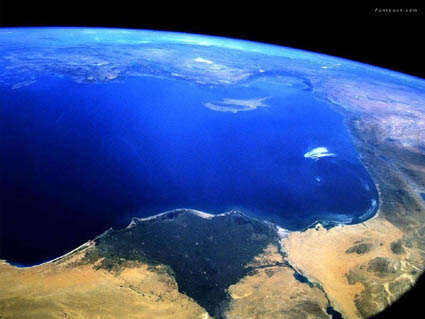Not long after he earned a graduate degree in journalism from Northwestern University Carl Ganter made a name for himself here in Traverse City, his hometown, as a young writer and photojournalist with an unerring grasp for great stories, and a superb eye for color, light, character, and drama. He could make an ordinary windmill, its blades lit against a dramatic dawn sky, look like the most exotic piece of energy technology ever invented. His wife, Eileen Ganter, is a radio producer and a visionary whose unpredictable wit and style makes it a riot to be around her. Even before they were married in the late 1990s, Carl and Eileen were a journalistic team known not just for their ability to join superb story telling skills with cutting edge technology, but more importantly, for their ambitiousness.
In 1998 the Ganters toured the Great Lakes aboard an iron ore carrier and produced a report that married sound, photographs, and text for ChicagoTribune.com that was among the first great pieces of multi-media journalism ever on the Web. Their 2000 film, With These Hands, which chronicles the lives of four farmers on Old Mission Peninsula north of Traverse City, is a tour de force in the early application of multi-media tools to non-fiction story telliing, and arguably the finest documentary ever produced in northern Michigan.Â
The point is that the Ganters are journalists who think big, and have the skills, moxie, and entrepreneurial spirit to execute expansive ideas. Their newest project is Circle of Blue. In its basic concept, Circle of Blue operates on two levels. First, it is a classic communications project designed to use the tools of journalism to inform and mobilize grassroots action to solve the freshwater crisis. One of every three people on the planet lives without adequate clean water or sanitation; 6,000 people, mostly children, die each day from preventable, water-related diseases.
Second, Circle of Blue leverages the Internet’s ability to foster online communities by reaching into billions of homes and generating active conversations. The idea is to produce first-rate multi-media story telling to elevate freshwater scarcity as a top planetary priority, and then to generate an active dialogue that focuses on solutions. In essence, the Ganters have set out to build a global social movement around something as old as great narrative structure, and as new as multi-media and the Internet.
Last weekend I spent two days with Carl and Eileen, and about two dozen other terrifically talented journalists, photographers, lawyers, researchers, designers, technical specialists, and Web geeks from around the country who are helping to launch Circle of Blue. It was like attending the Web equivalent of the first fission reaction, which occurred almost 70 years ago at the University of Chicago. Just to give you an idea of the kind of talent amassed around Circle of Blue, take a look at the Web sites of some of the people who came for the weekend.Â
One of Circle of Blue’s primary goals is to serve as a kind of central command center for linking the world’s great scientific, academic, government, and non-profit digital data bases about fresh water. Alon Halevy, a professor of computer science and engineering who just left the University of Washington to take up a data base development position at Google, is assisting Circle of Blue in building what Halevy called “data spaces” to tie the world’s fresh water data bases together.
Circle of Blue has been five years in the making, starting with the Ganters’ coverage of water issues at the World Summit on Sustainable Development in 2002 for MSNBC.com. Carl also has served for four years on the Woodrow Wilson International Center for Scholars Water Working Group. When you talk to Carl and Eileen it becomes readily apparent that the global fresh water crisis, caused by shrinking supplies and tightening access, is another of the immense social and economic problems rooted in environmental degradation that government has no capacity to solve.Â
Rivalry, partisanship, and diminished statesmanship; government is mired in the hierarchical political operating principles of the 20th century, when division trumped collaboration. In the 21st century, people at the grassroots understand the immense transition confronting their families and themselves. They know because many have access to new knowledge provided on the Internet. That same tool empowers people by connecting them in ways not available prior to 1994, when AOL and Compuserve first offered dial up service. Circle of Blue taps into that power and expands it with a new narrative. The project’s development is well worth watching as a model for what is possible when people acquire new tools that provide answers instead of inaction.Â

Great blog and very pleased to see Circle Of Blue moving forward. Think Global – Act Local…sure…by if we can think local AND think global AND act on both…AND if our technology provides the vehicle to do it…then all the better!
Rusch:
We’re on the way to the Clinton Global Initiative tomorrow. Circle of Blue was invited to participate and we’re determined to recruit new partners and funders. It’s quite the project. Check out the new video and news release at http://www.circleofblue.org. Best, Keith